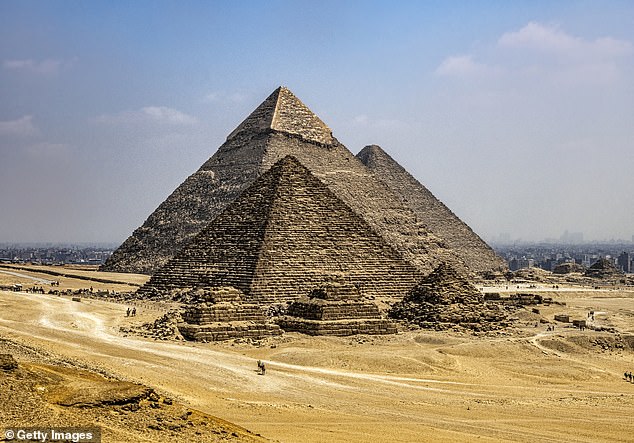
New Discovery Bolsters Experts’ Belief in Vast Subterranean Metropolis Beneath Egypt’s Giza Pyramids
Scientists Claim Discovery of Ancient Underground City Beneath Giza Pyramids
A team of researchers claims to have uncovered evidence of a sprawling underground city more than 4,000 feet below Egypt’s Giza Pyramids. Using high-frequency electromagnetic waves, the group detected what they describe as eight wells, spiral staircases, and massive chambers beneath the Pyramid of Khafre. Their findings, if validated, could rewrite ancient history—though experts remain deeply skeptical.

The Giza Plateau, where researchers claim hidden structures lie thousands of feet underground.
Methodology and Findings
The team, led by Corrado Malanga (University of Pisa), Filippo Biondi (University of Strathclyde), and Egyptologist Armando Mei, used radar-like technology to send electromagnetic signals into the ground. By analyzing reflected waves, they mapped subsurface structures, later processed via a specialized algorithm. The resulting images revealed vertical shafts and enclosures resembling spiral staircases, likened to Italy’s Pozzo di San Patrizio.
Niccole Ciccole, the project’s spokesperson, stated the team achieved “85–90% confidence” in identifying helical formations and chambers. “The upper portions suggest staircases, while deeper layers hint at materials or voids,” she explained.

Six shafts and a chamber detected beneath the Pyramid of Khafre.
Skepticism from Experts
Critics argue the claims lack scientific rigor. Professor Lawrence Conyers, a radar archaeology expert, noted the absence of comparative data: “Without physical verification, confidence percentages are meaningless.” Dr. Zahi Hawass, Egypt’s former antiquities minister, dismissed the methods as “neither approved nor validated.”
While Conyers acknowledged small pre-pyramid structures might exist—similar to Mesoamerican ceremonial sites—he called the idea of a 38,000-year-old city “outlandish.” Human settlements of that scale, he noted, emerged only around 9,000 years ago.

Radar scans revealing subsurface anomalies beneath Khafre’s pyramid.
Controversial Age and Ancient Texts
The team’s boldest claim—that the structures date back 38,000 years—relies on interpretations of ancient texts. They cite the Book of the Dead and the Turin King List, which mentions predynastic rulers, as evidence of a lost civilization destroyed by a cataclysm, possibly the Younger Dryas asteroid impact (~12,800 years ago). Most scientists reject this hypothesis due to a lack of crater evidence.
Ciccole argues these texts describe “14 dwellings of the divine,” interpreted as remnants of an advanced pre-pharaonic society. However, Conyers countered that 38,000 years ago, humans “were mostly in caves,” not building cities.

The research team: Armando Mei, Nicole Ciccolo, Filippo Biondi, and Corrado Malanga.
Calls for Verification
The study, yet to undergo peer review, has sparked calls for physical exploration. The researchers admit “further validation through tomographic scans and in-situ checks” is needed. Until then, the debate underscores the challenges of merging cutting-edge technology with historical interpretation.
Whether a groundbreaking discovery or speculative overreach, the mystery beneath Giza continues to captivate—and divide—experts and enthusiasts alike.

Proposed layout of structures extending 4,000 feet below Giza.
(Word count: ~600)


